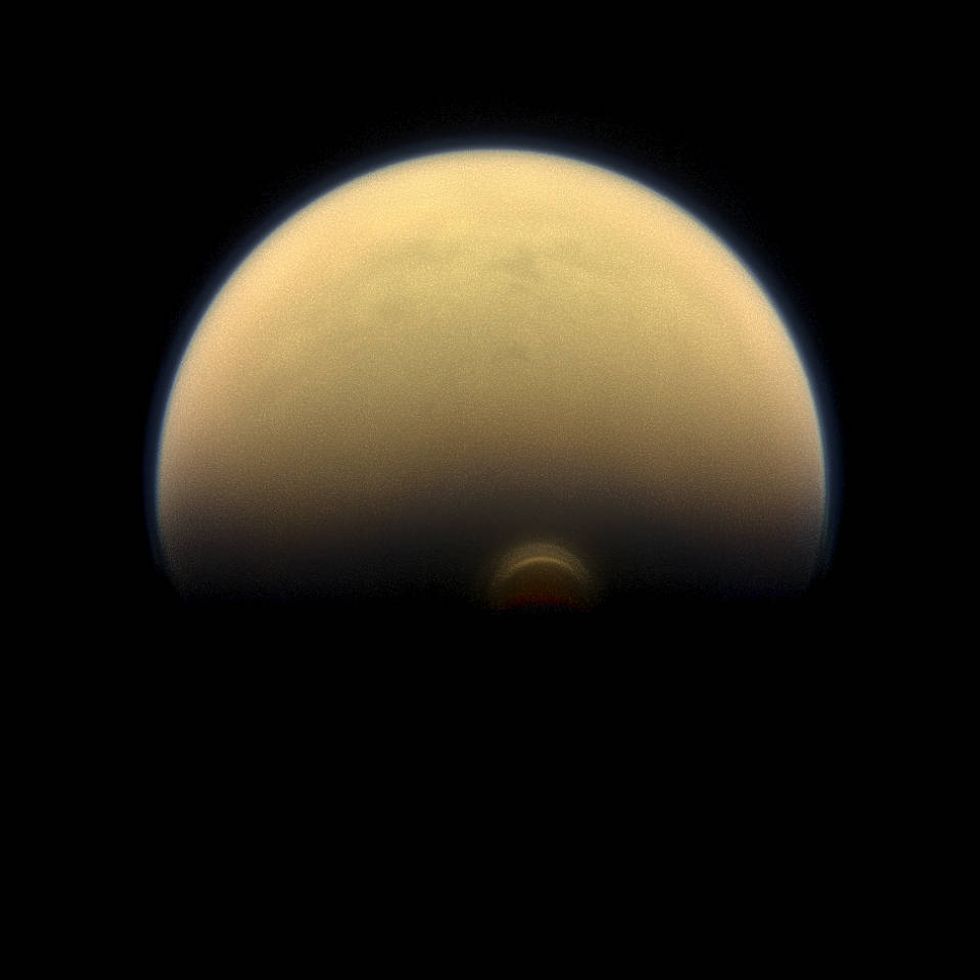
As winter sets in at Titan’s south pole, a cloud system called the south polar vortex has been forming, as seen in this 2013 image. (NASA/JPL-Caltech/Space Science Institute)\n

Scientists reviewing infrared data from NASA's Cassini spacecraft discovered a "monstrous" ice cloud on Saturn's largest moon, the space agency announced Wednesday.
“When we looked at the infrared data, this ice cloud stood out like nothing we’ve ever seen before,” Carrie Anderson of NASA’s Goddard Space Flight Center said. “It practically smacked us in the face.”

Astronomers were already aware of a large cloud on Titan's south pole, but NASA said in a statement that Cassini's latest discovery proved it was "just the tip of the iceberg."
"A much more massive ice cloud system has now been found lower in the stratosphere, peaking at an altitude of about 124 miles (200 kilometers)," the statement from NASA said.

The observation marks the first time any spacecraft has ever observed a winter on Titan. Each season lasts for more than seven years, so when Cassini leaves in 2017 the entire south pole will have been swallowed by winter, NASA said.
“Titan's seasonal changes continue to excite and surprise," said Scott Edgington, Cassini deputy project scientist at NASA's Jet Propulsion Laboratory. "Cassini, with its very capable suite of instruments, will continue to periodically study how changes occur on Titan until its Solstice mission ends in 2017.”
The ice cloud allowed scientists to determine how cold things get on Titan's south pole. Using the latest info, astronomers estimate temperatures are as low as -238 Fahrenheit.
The findings were presented by Anderson Wednesday at the annual Meeting of the Division of Planetary Sciences of the American Astronomical Society in Maryland.
—
Follow the author of this story on Twitter and Facebook: